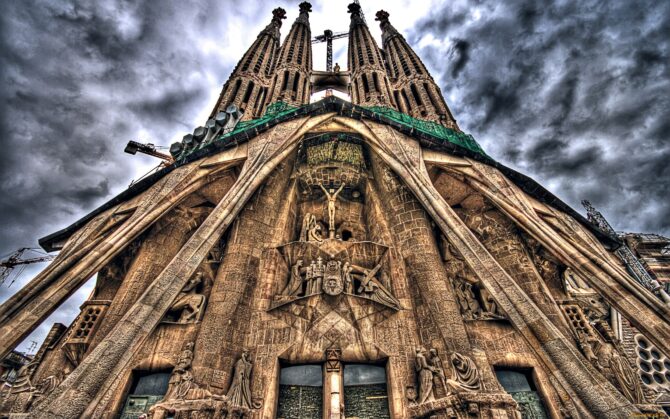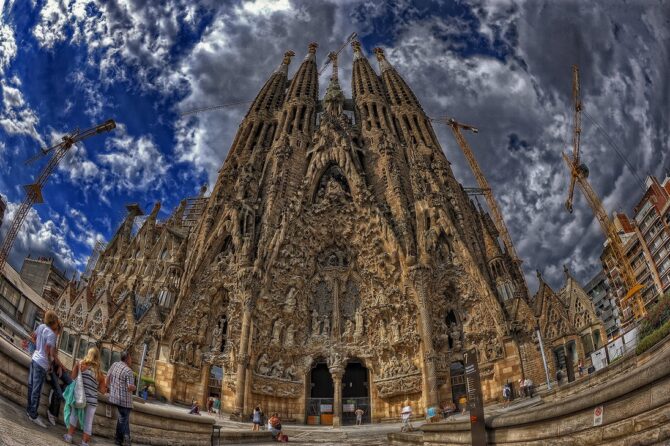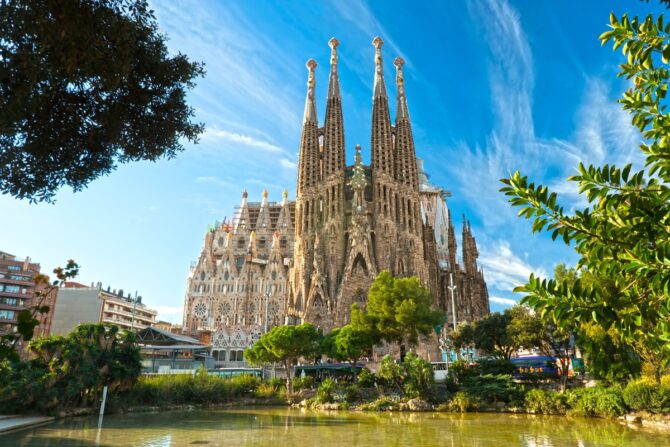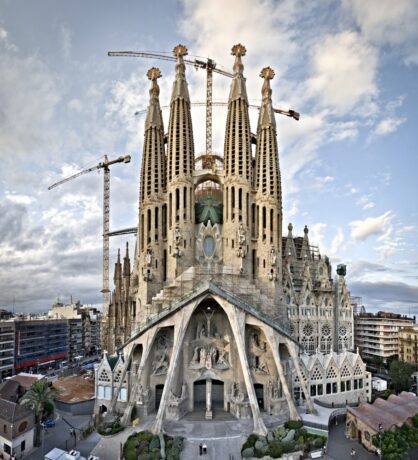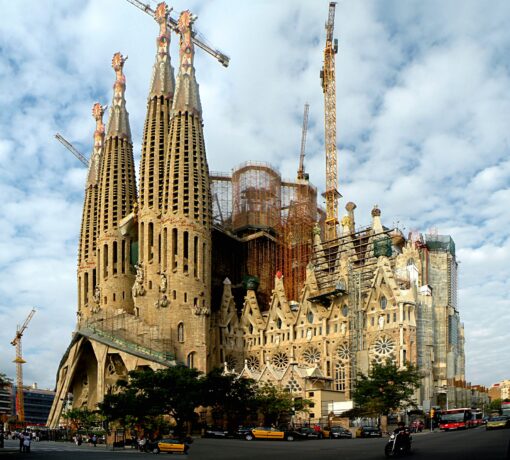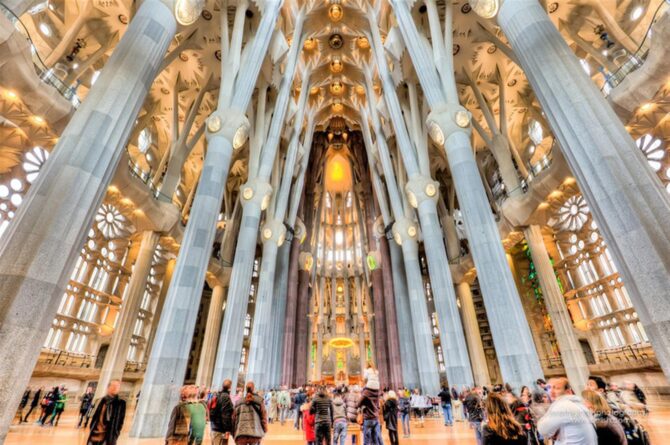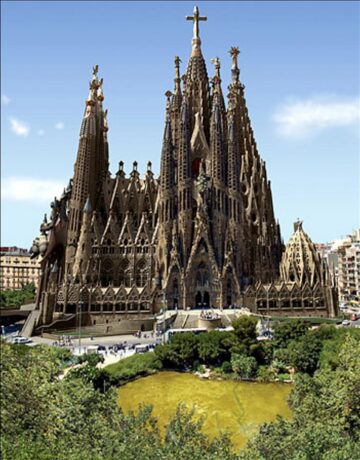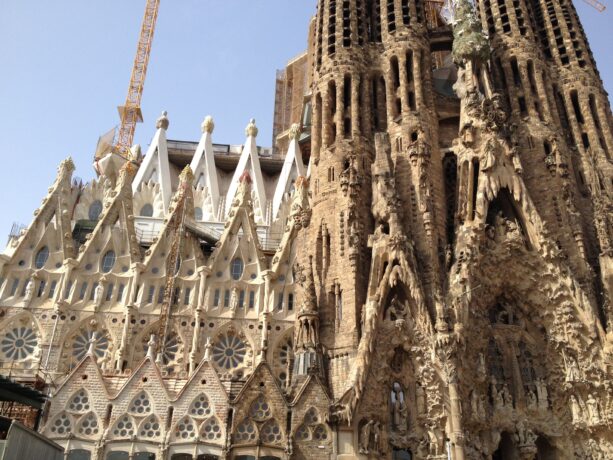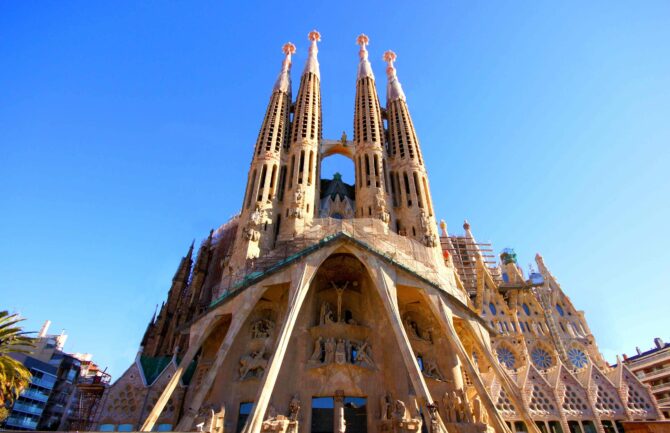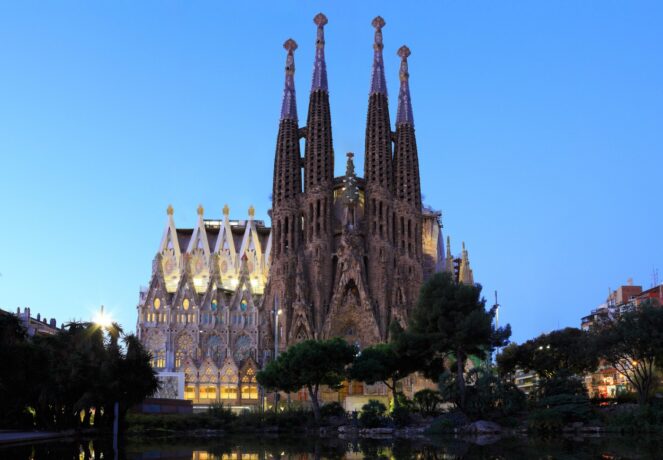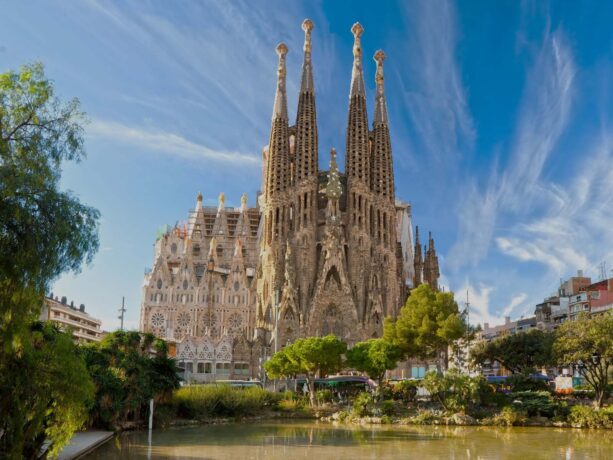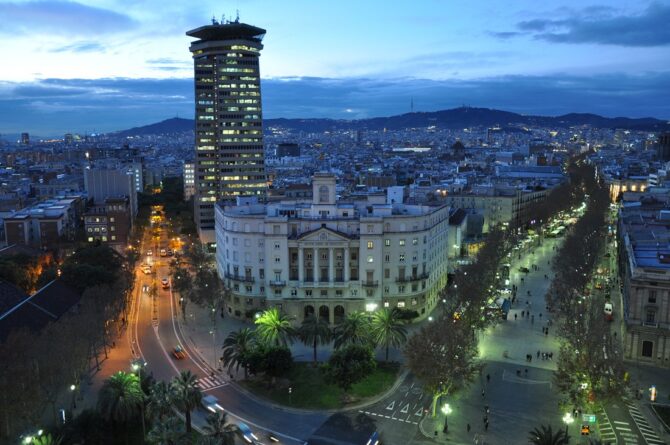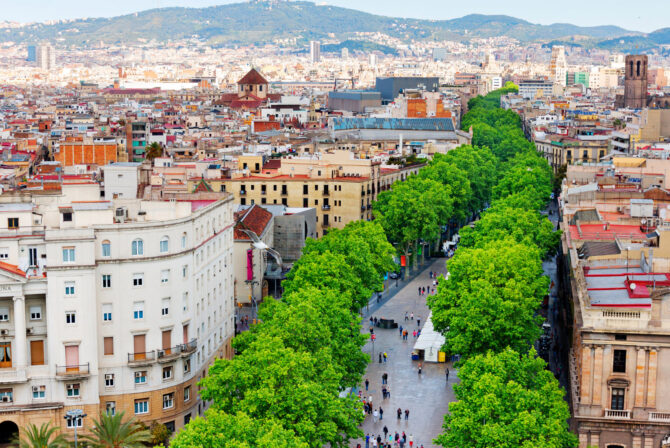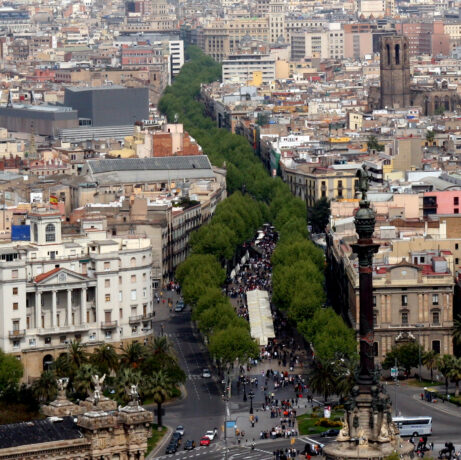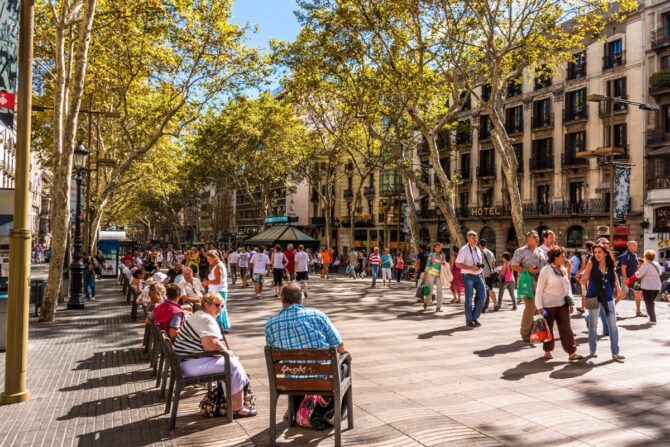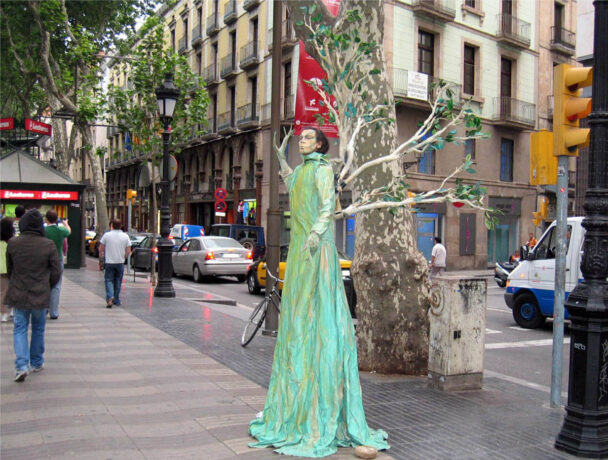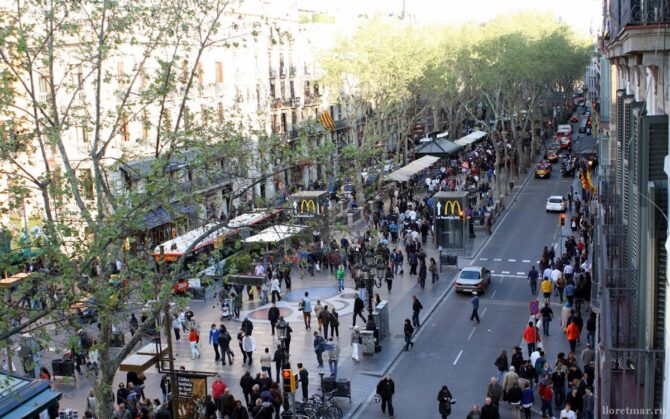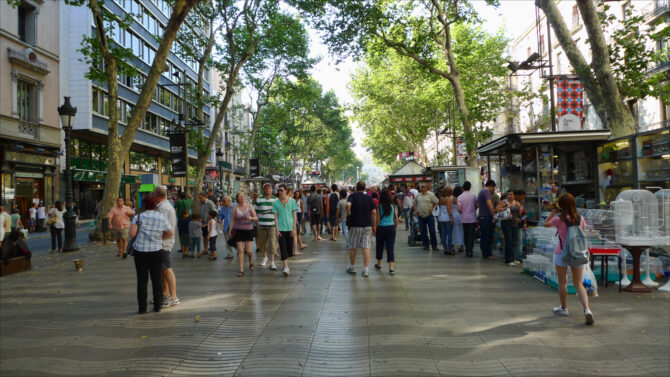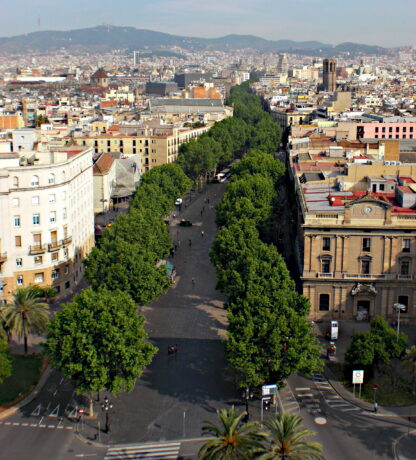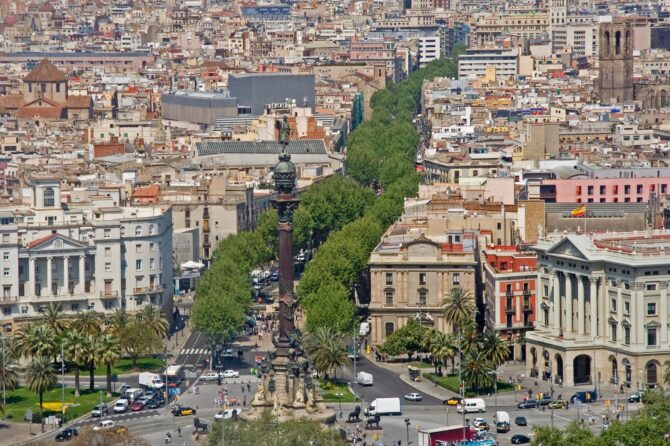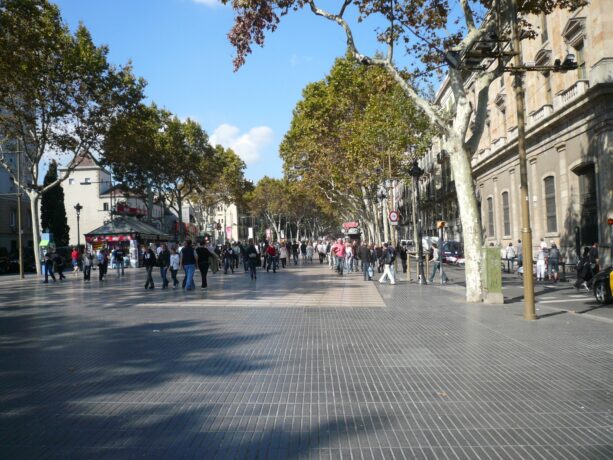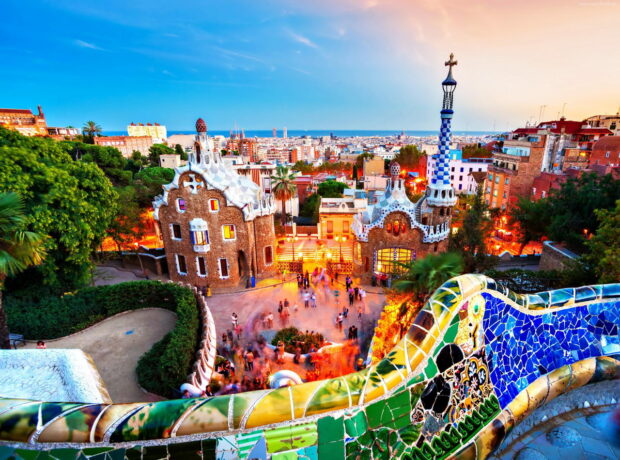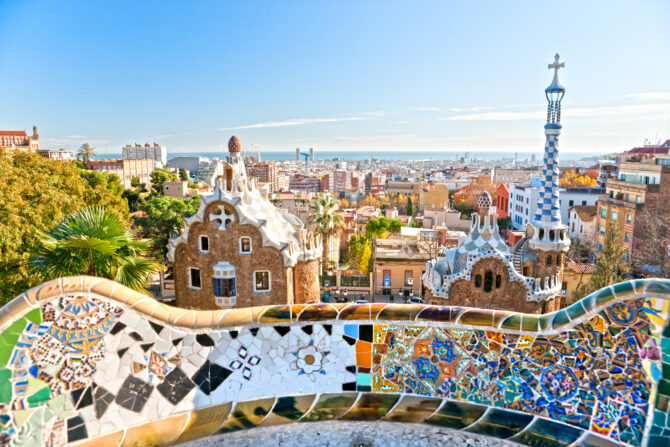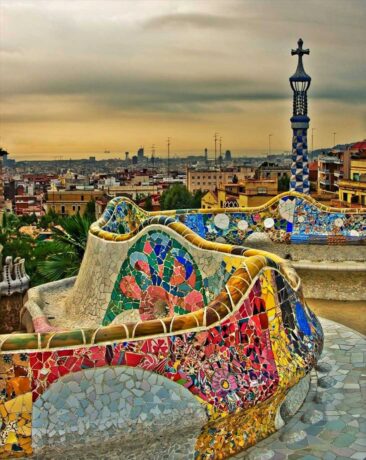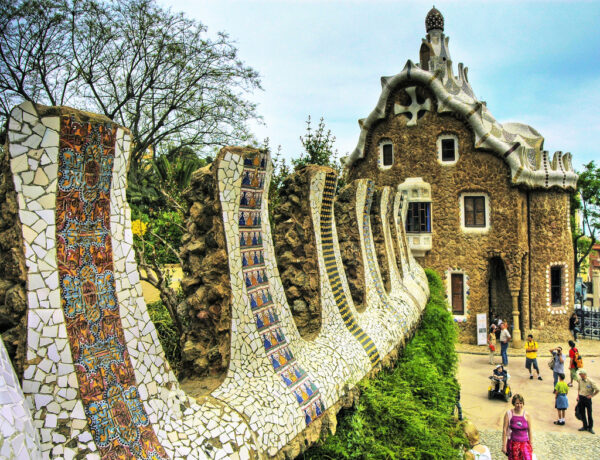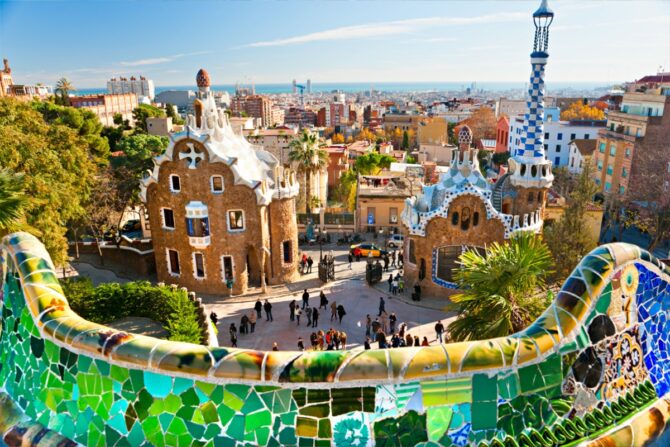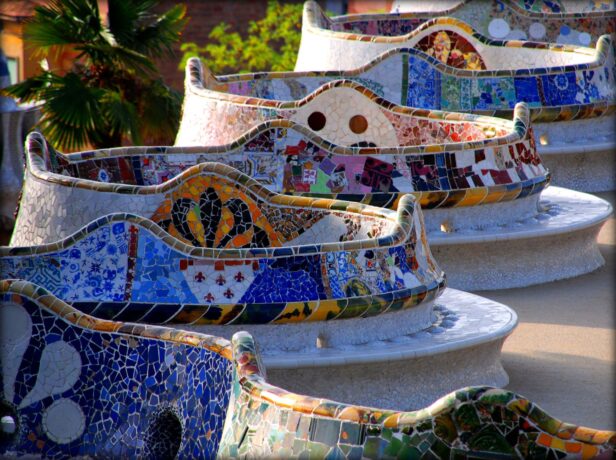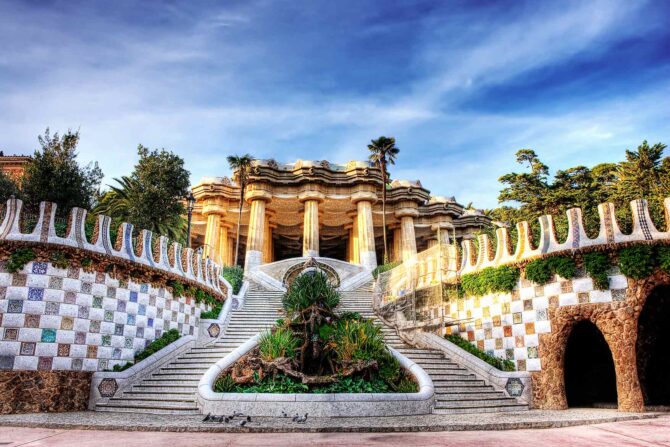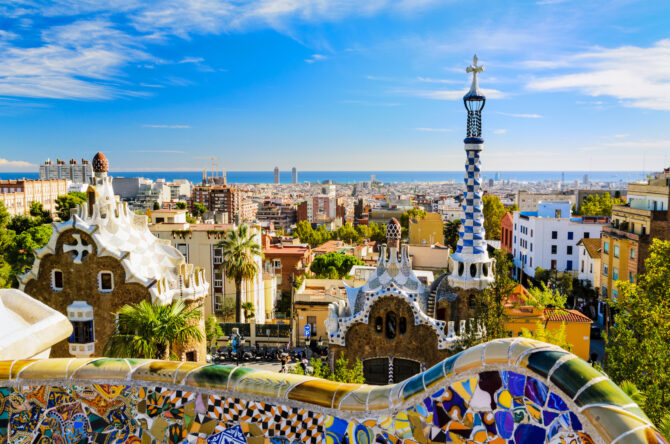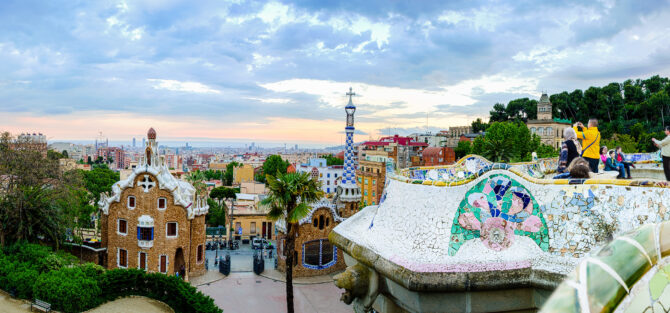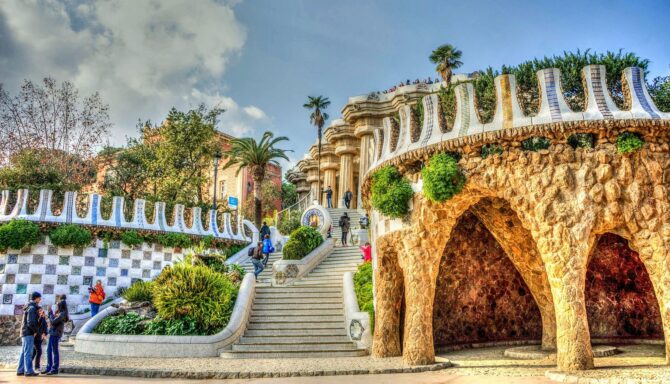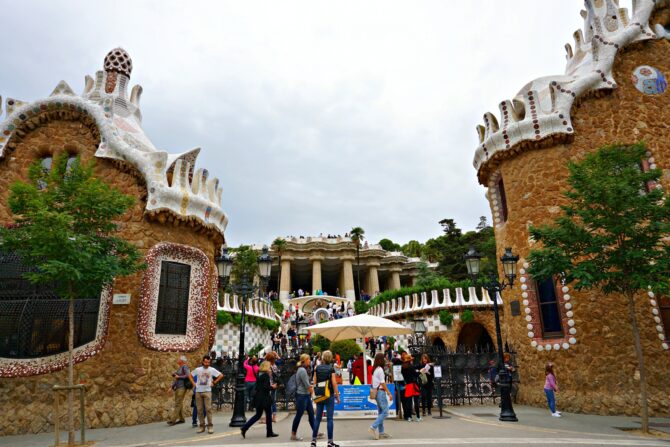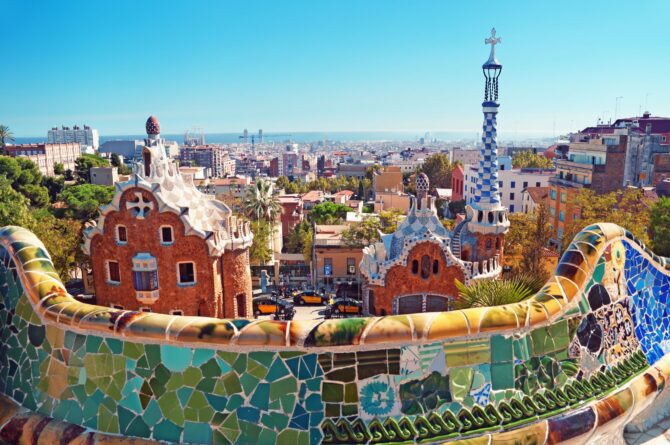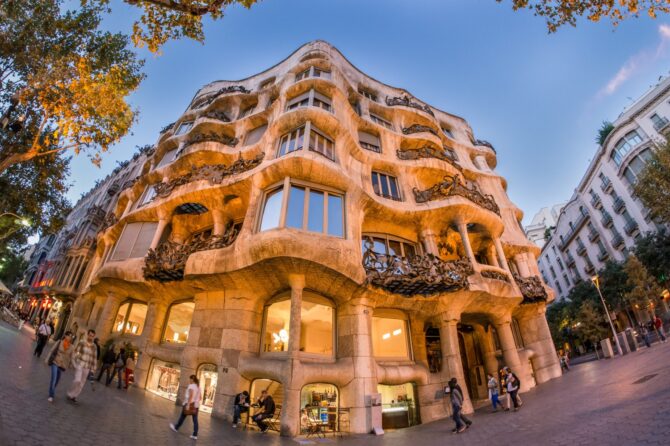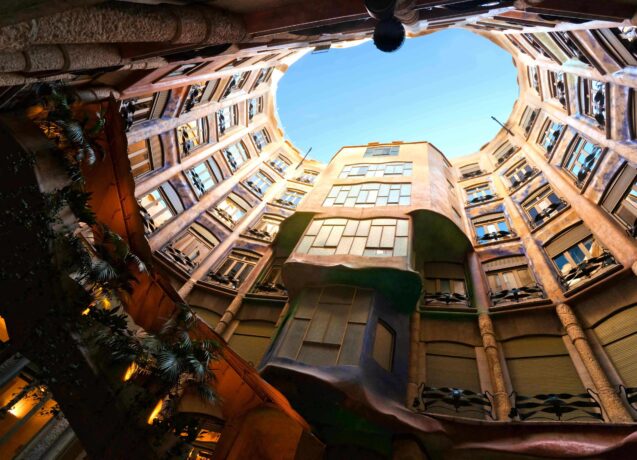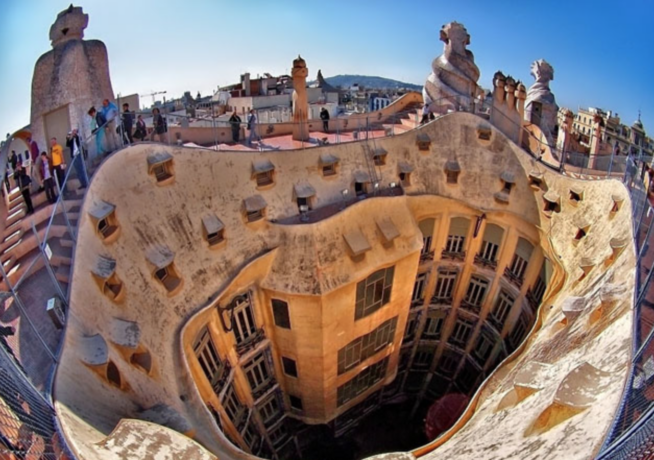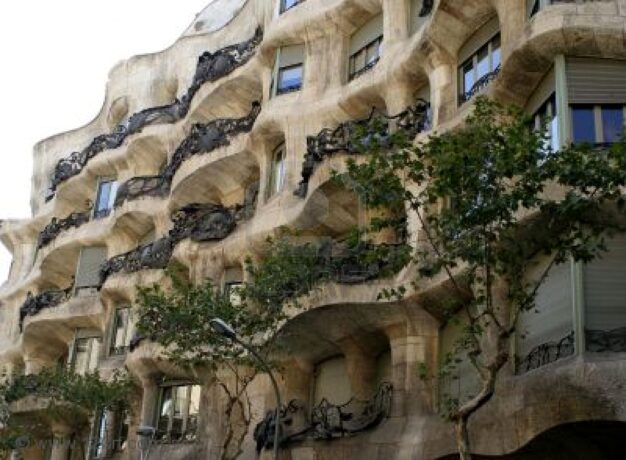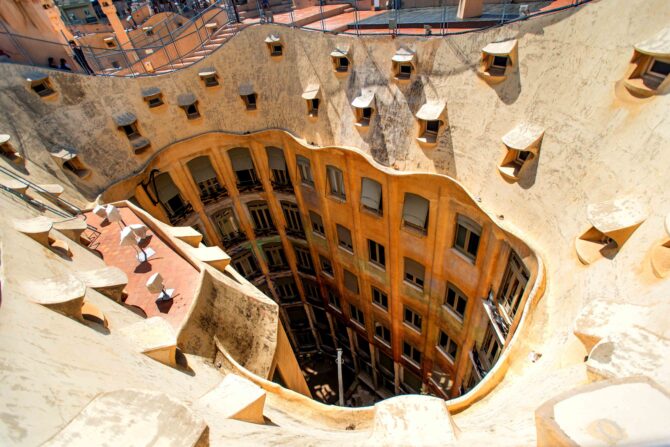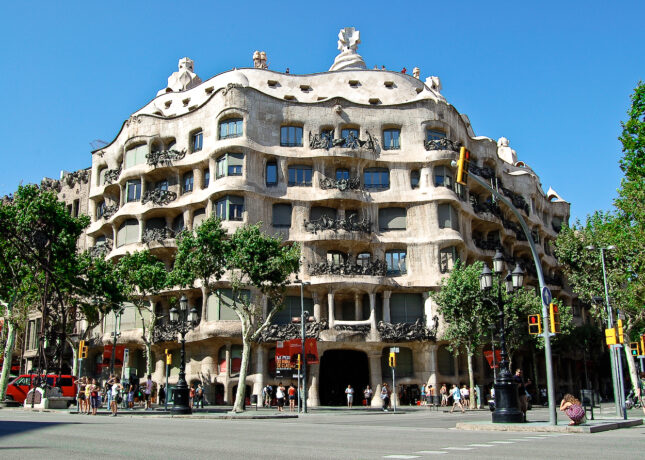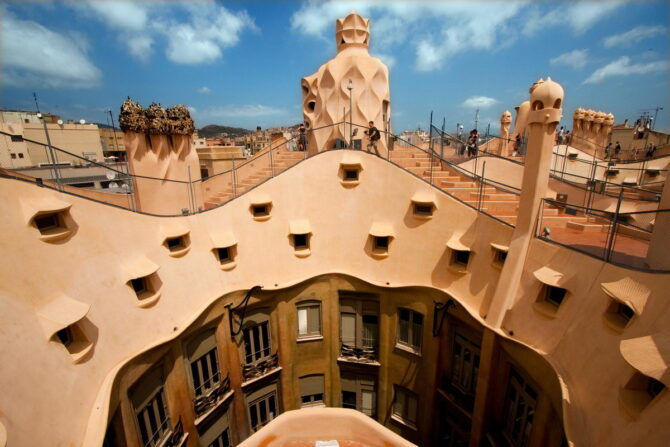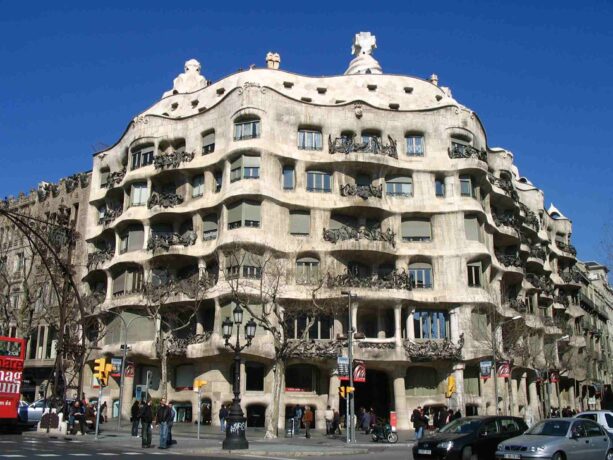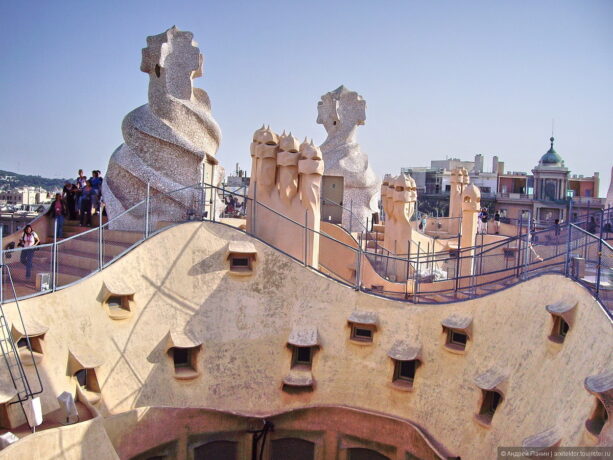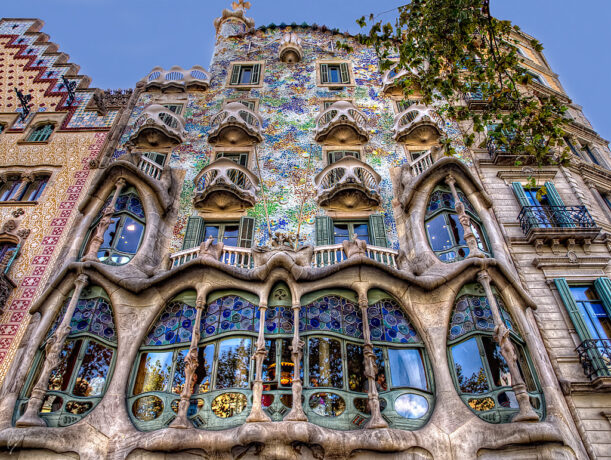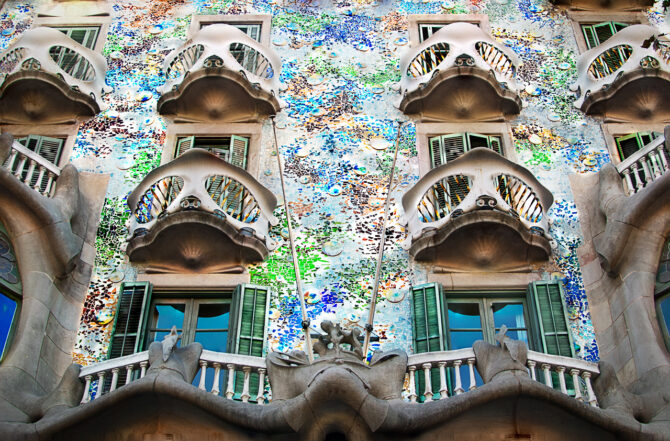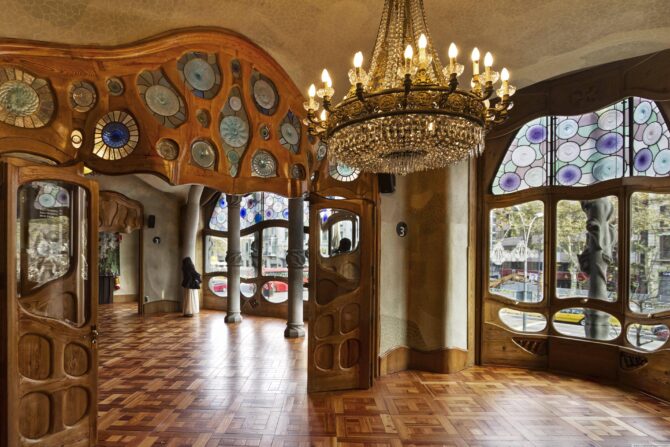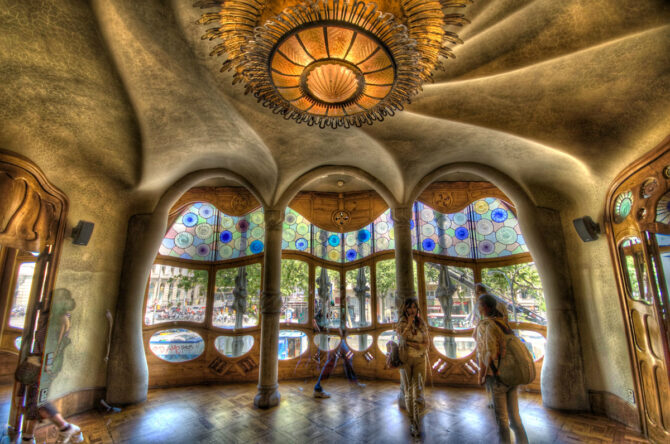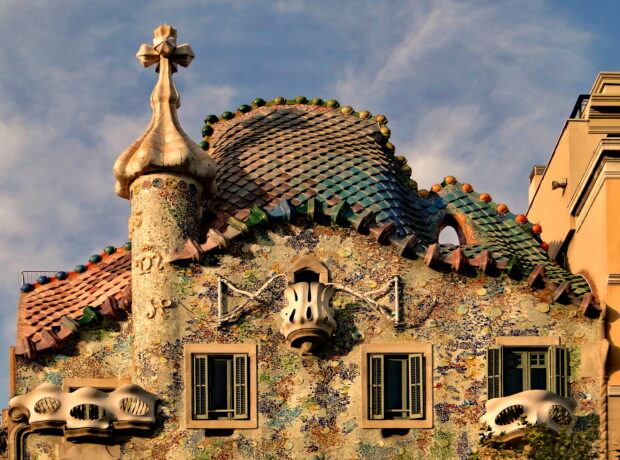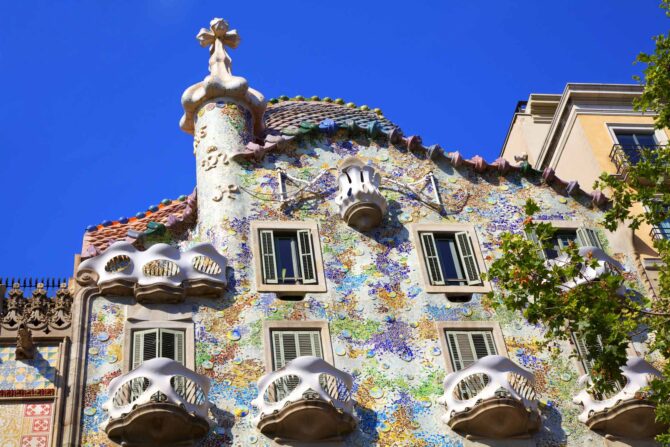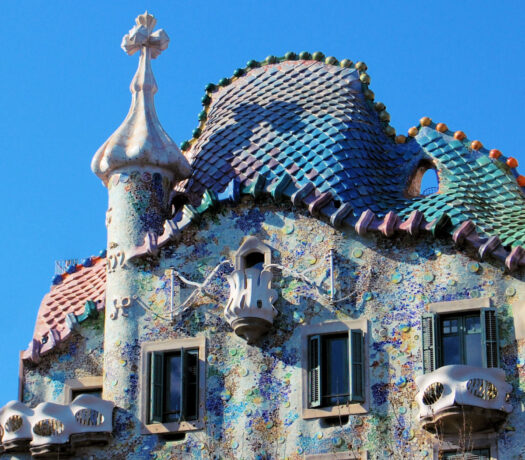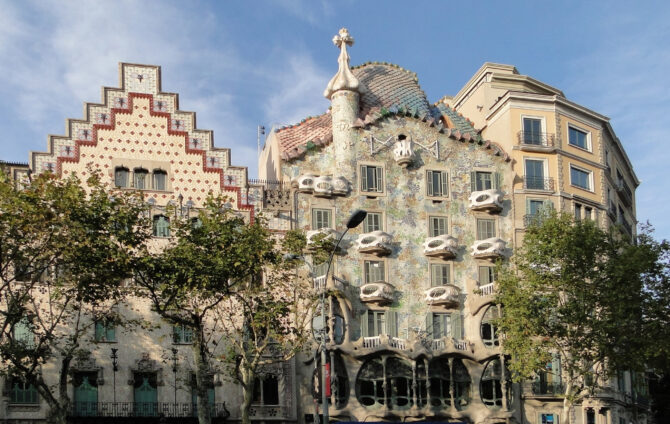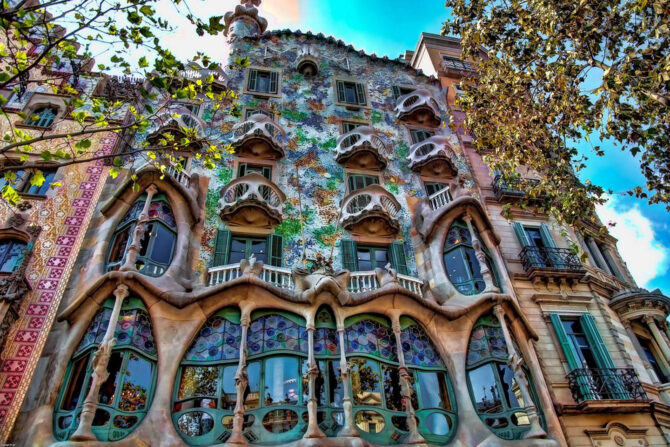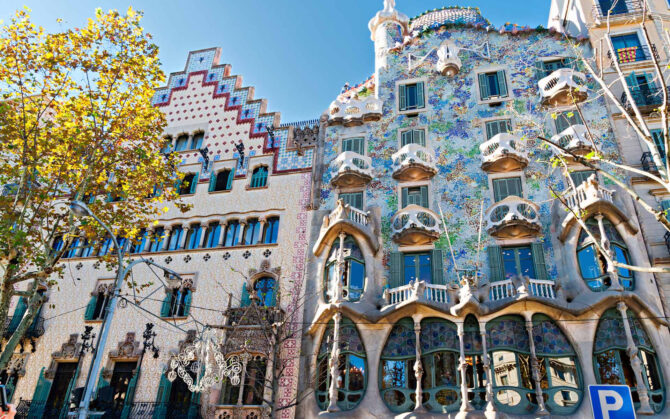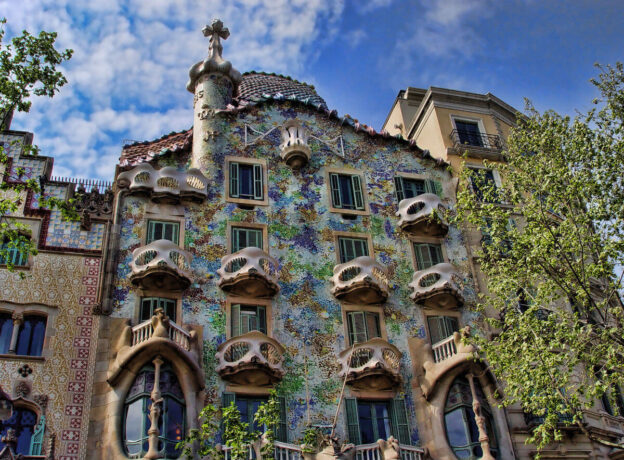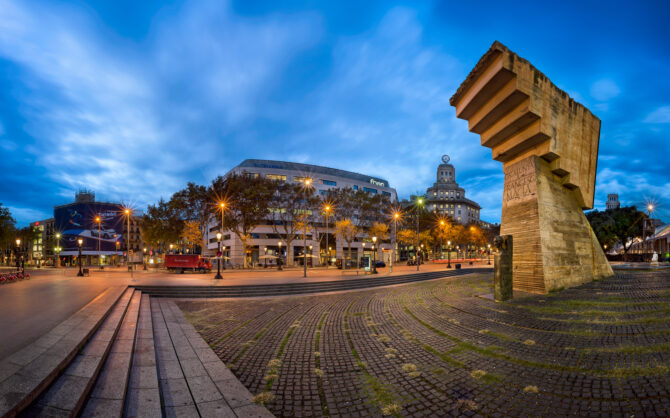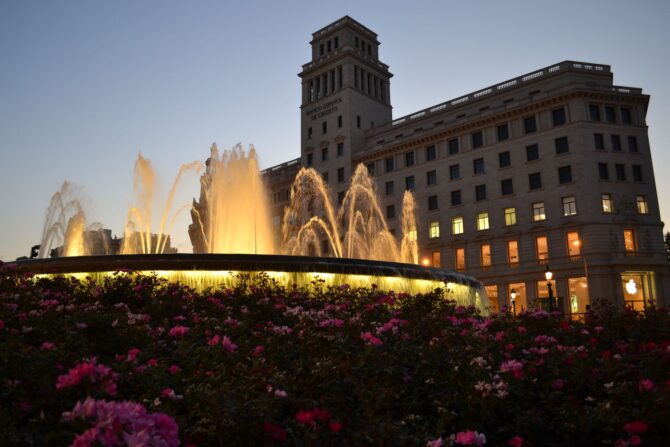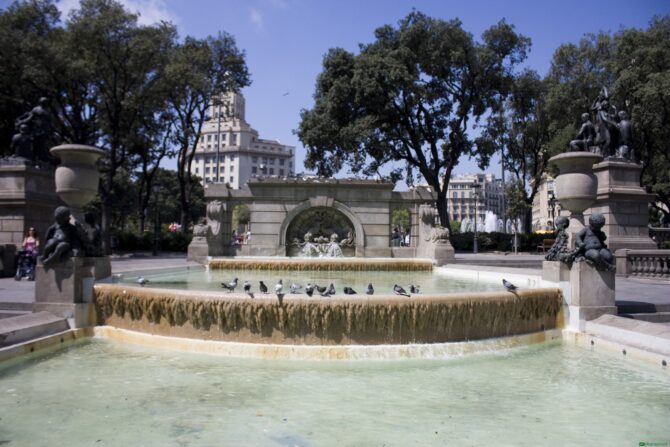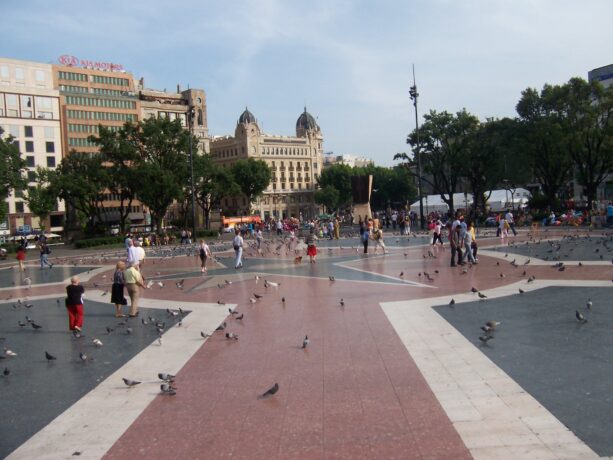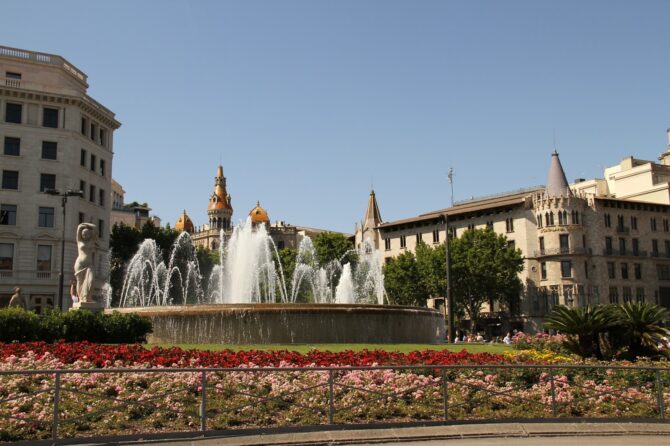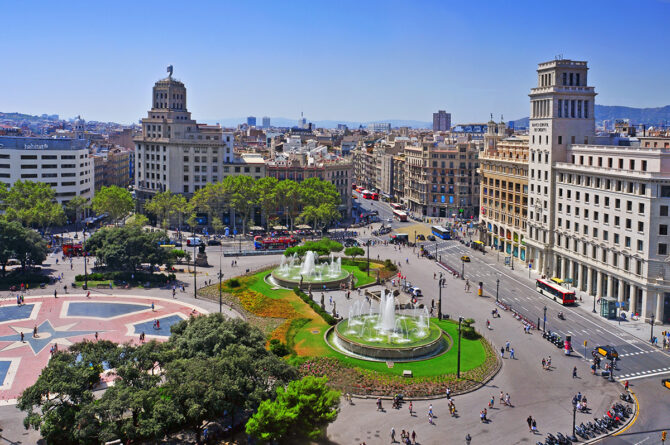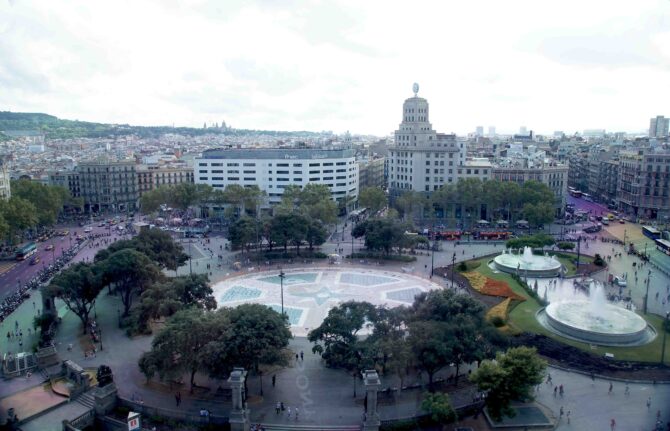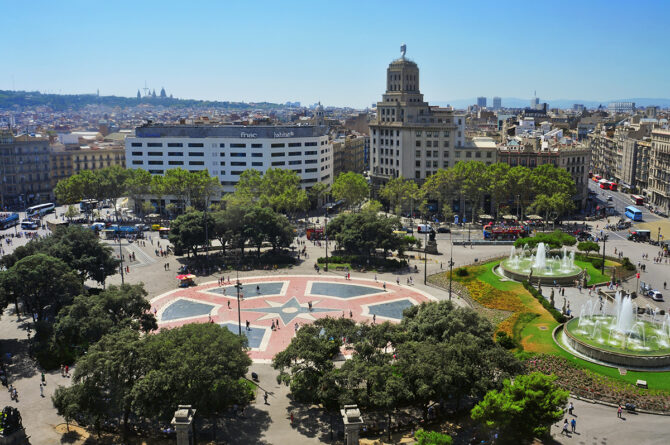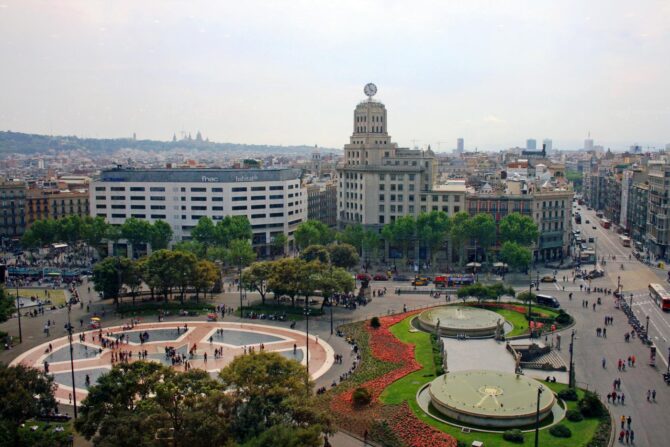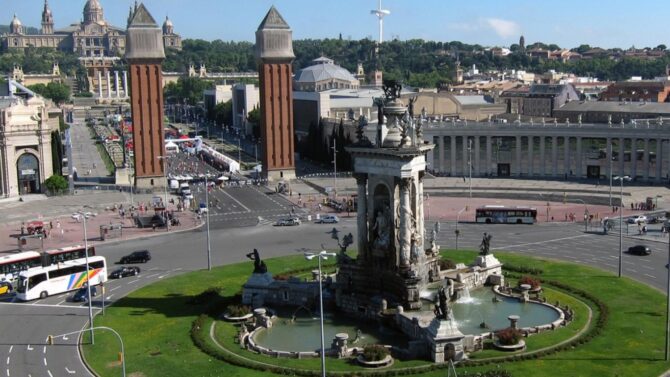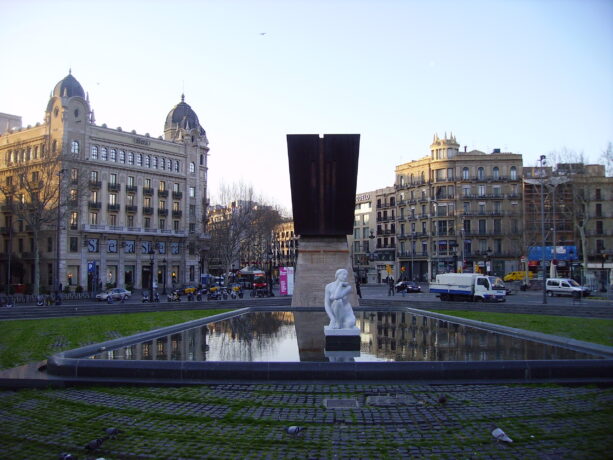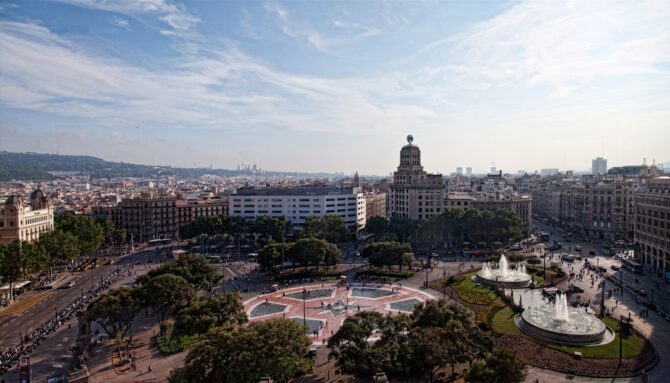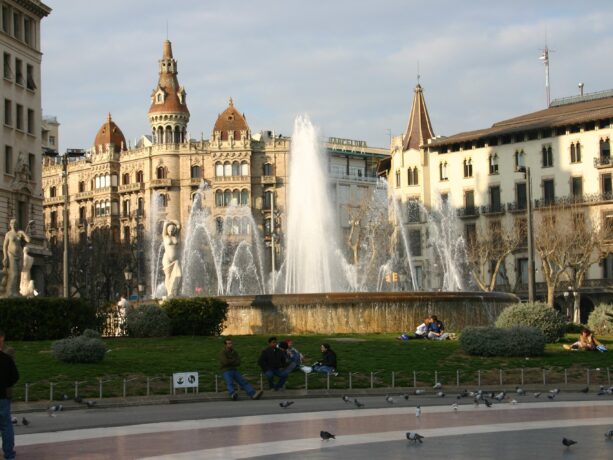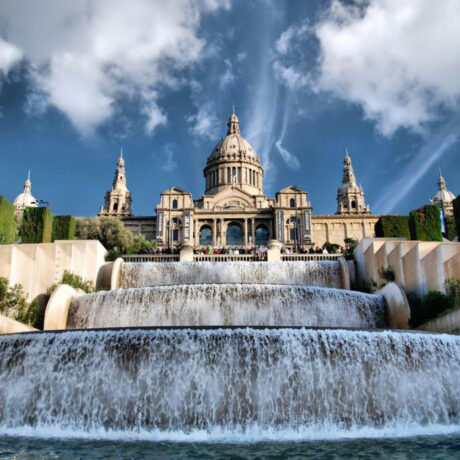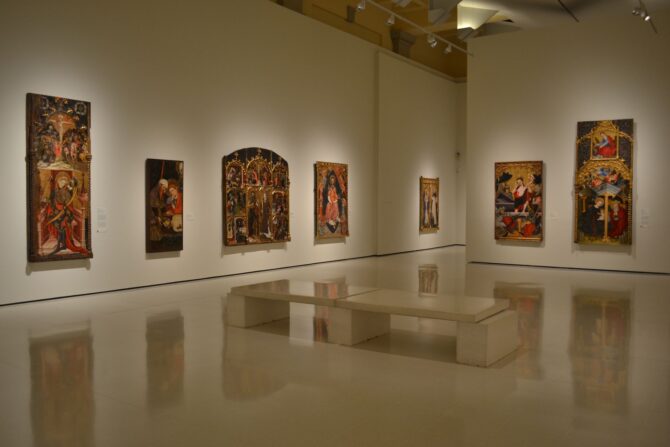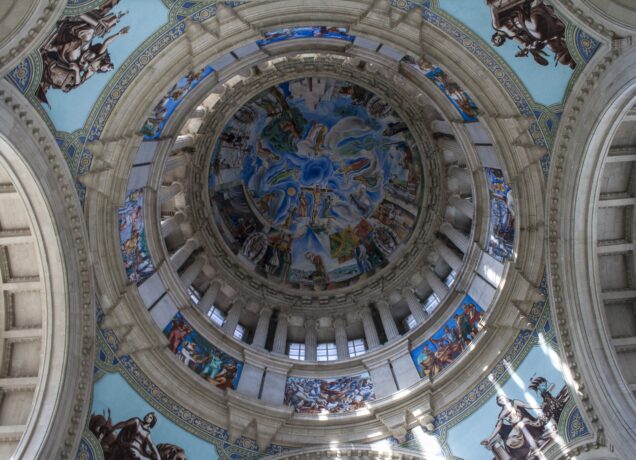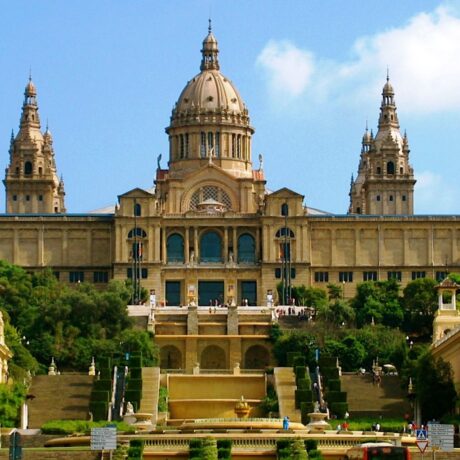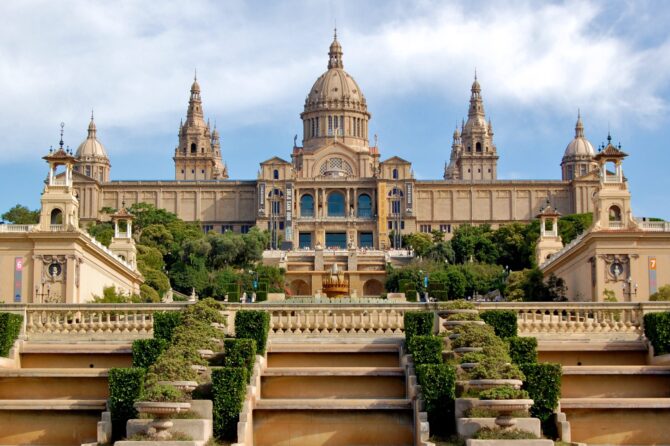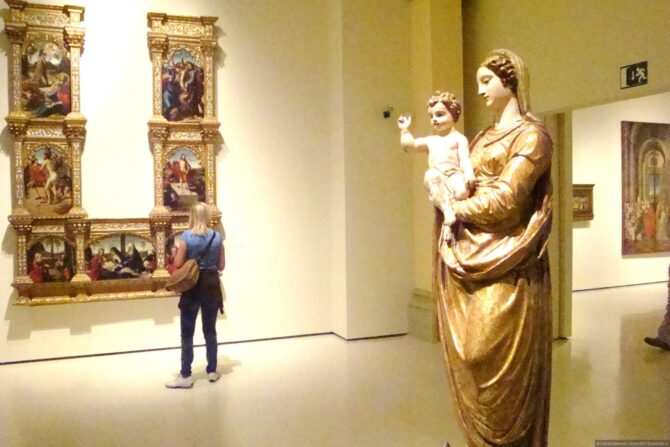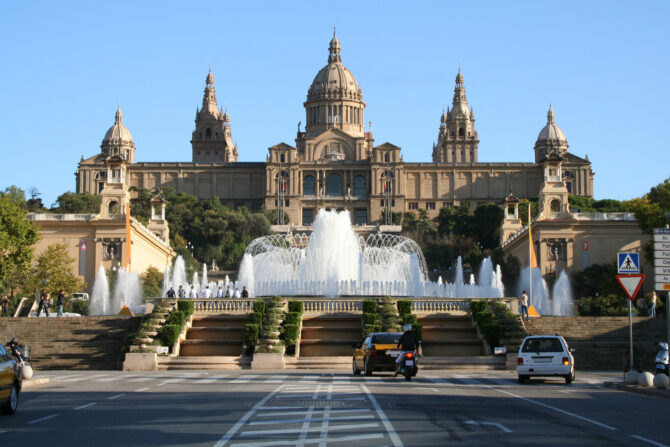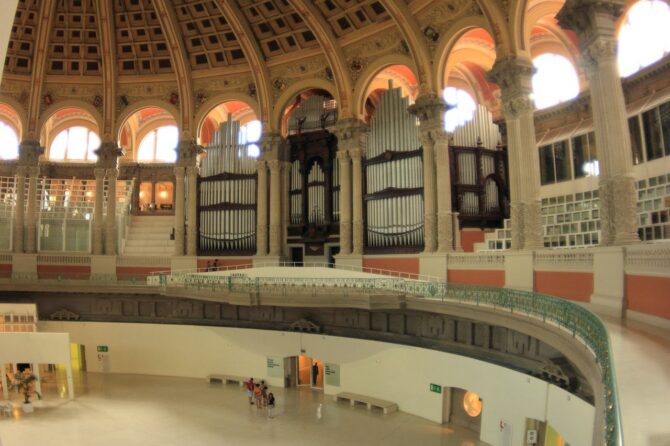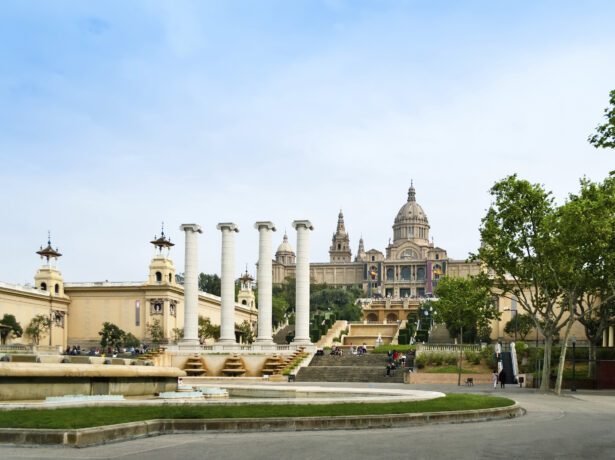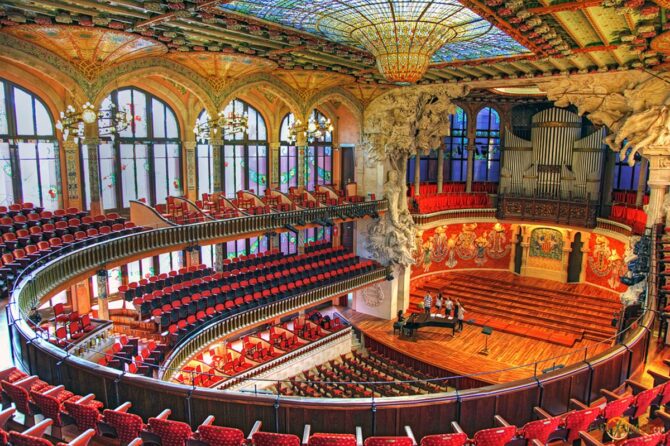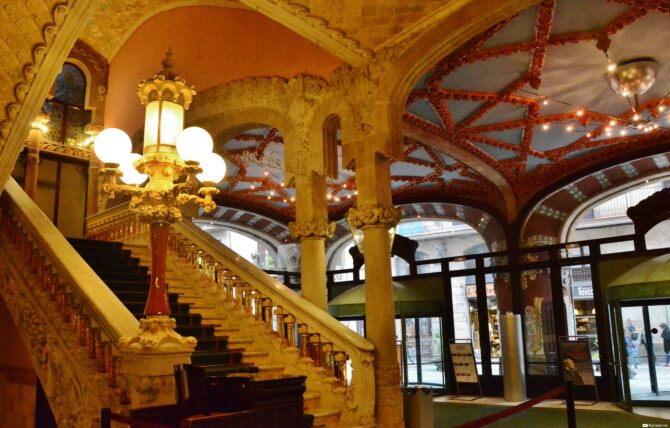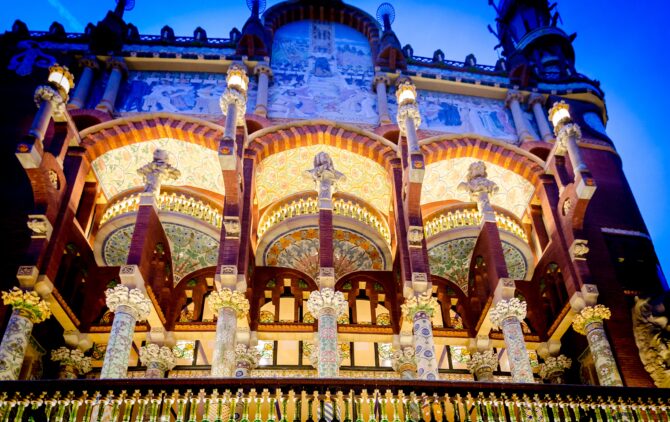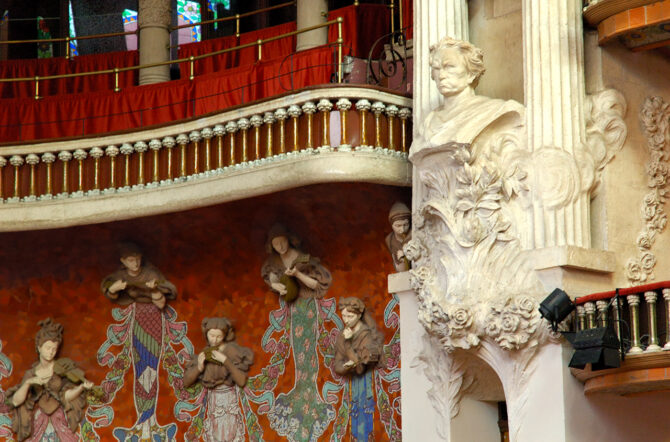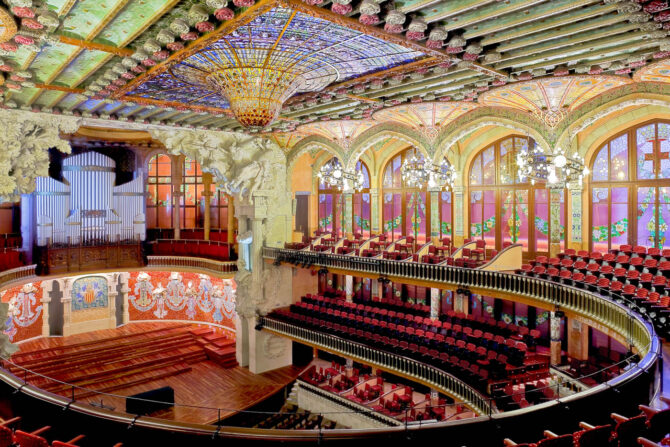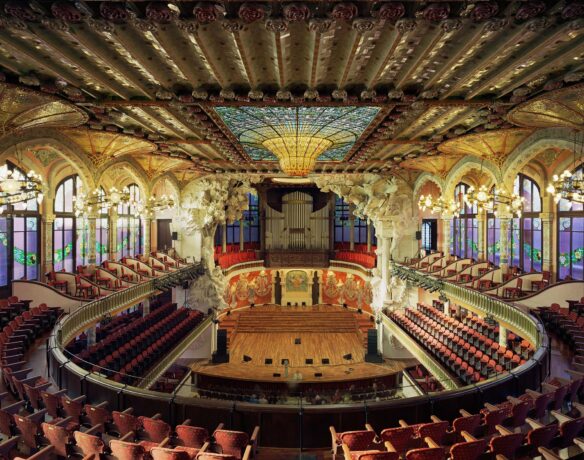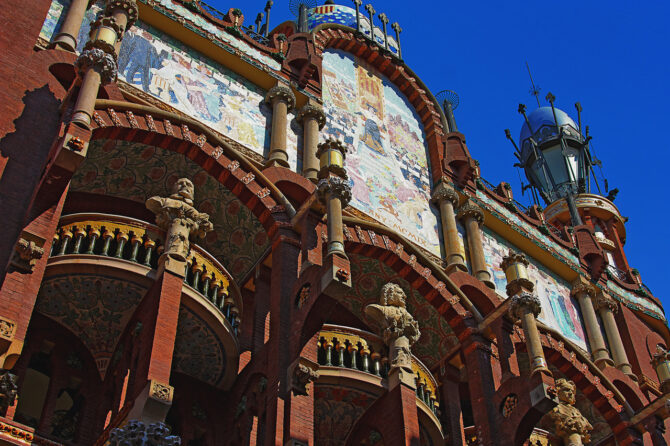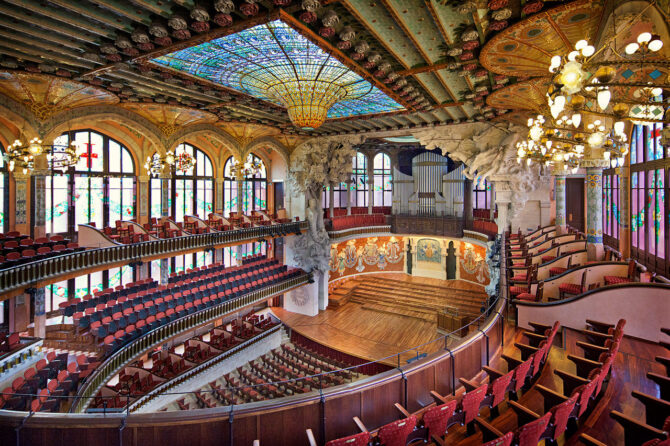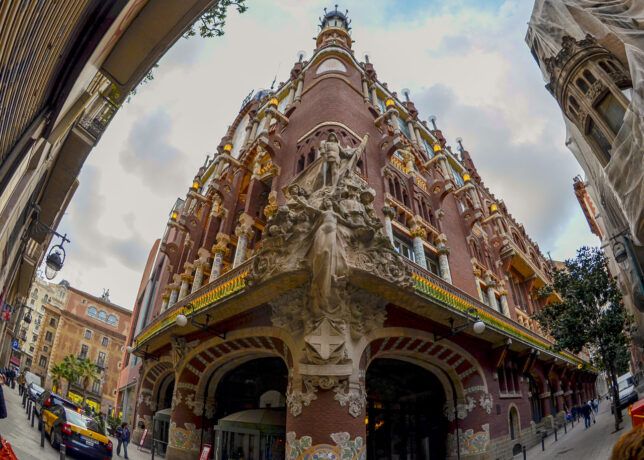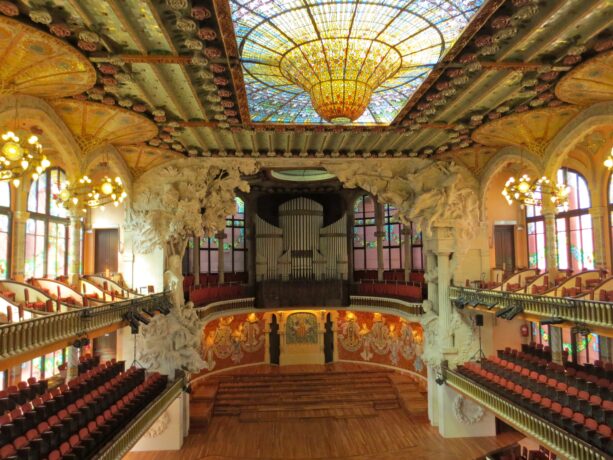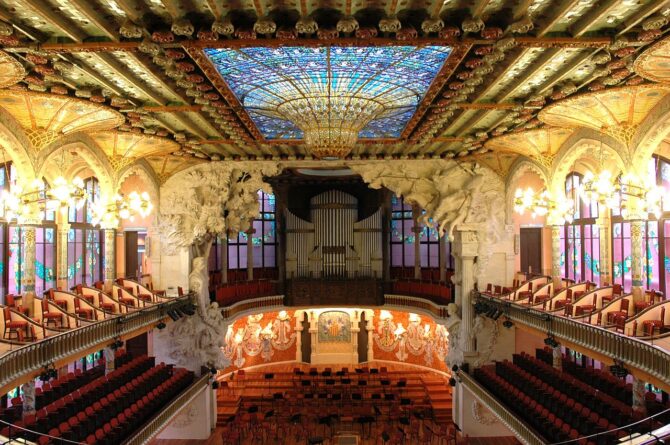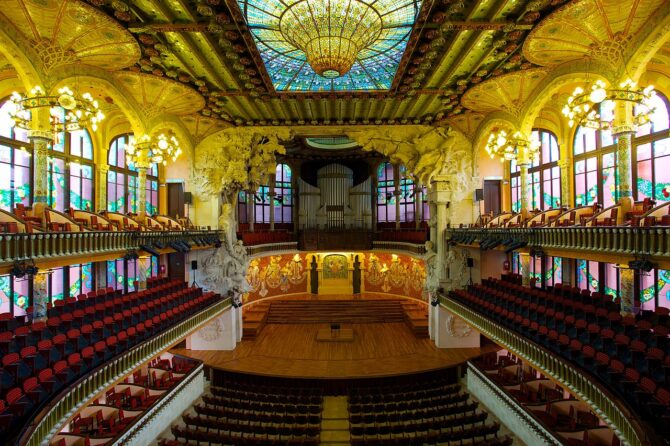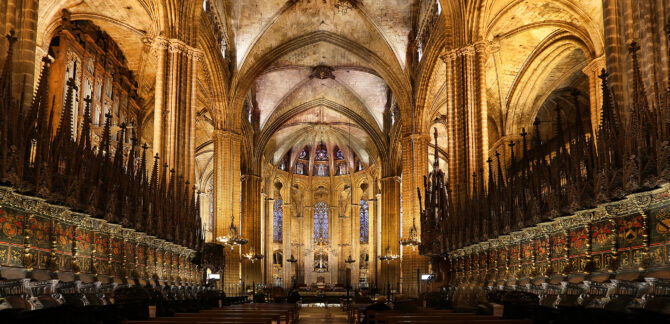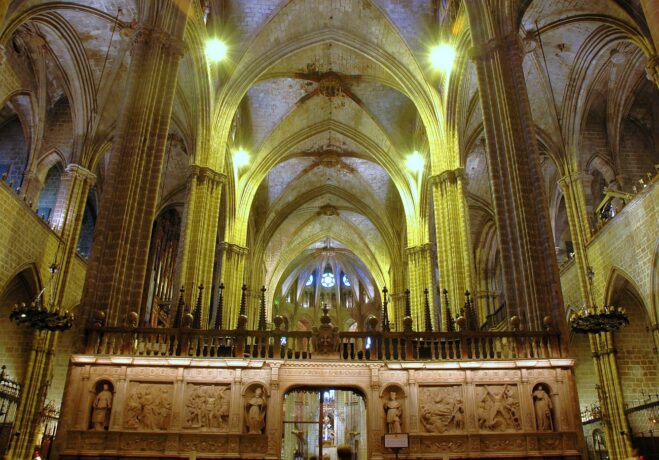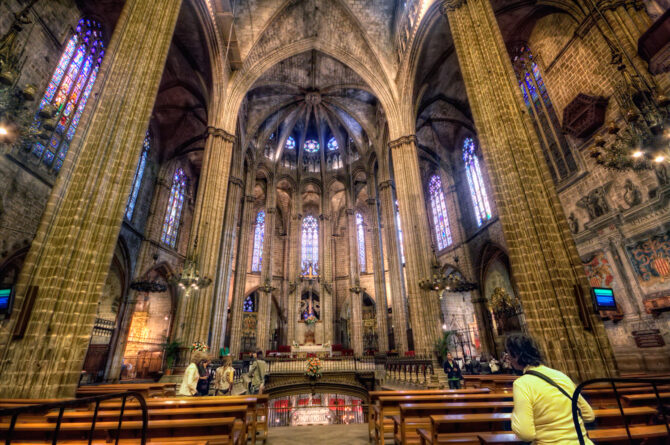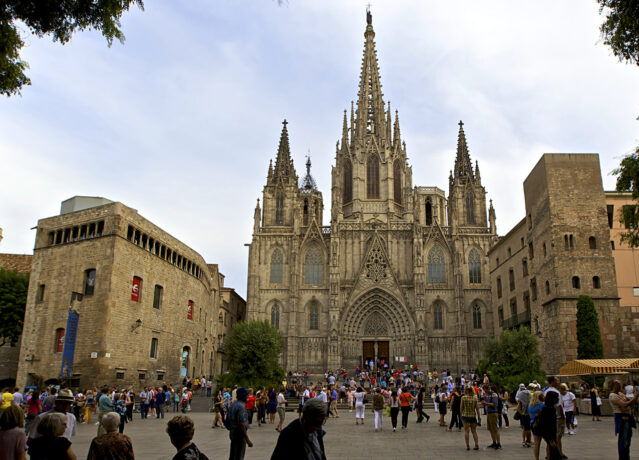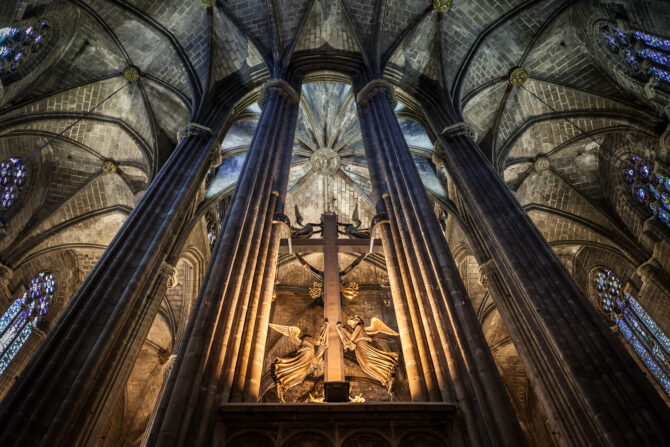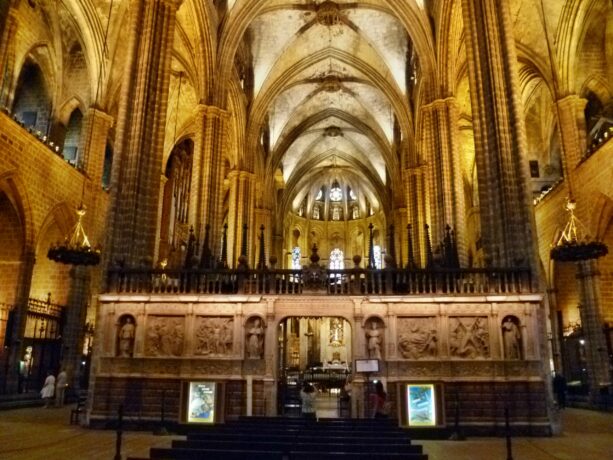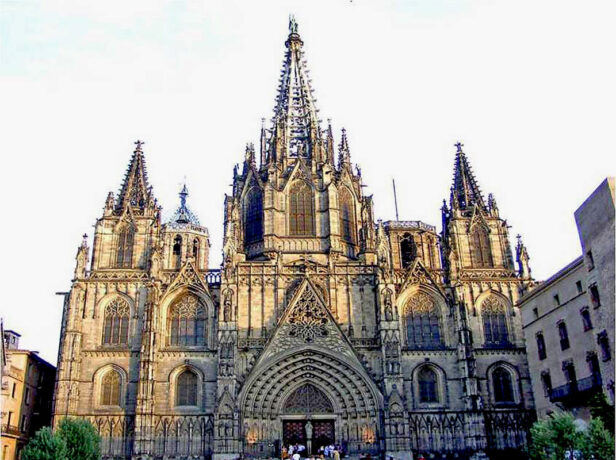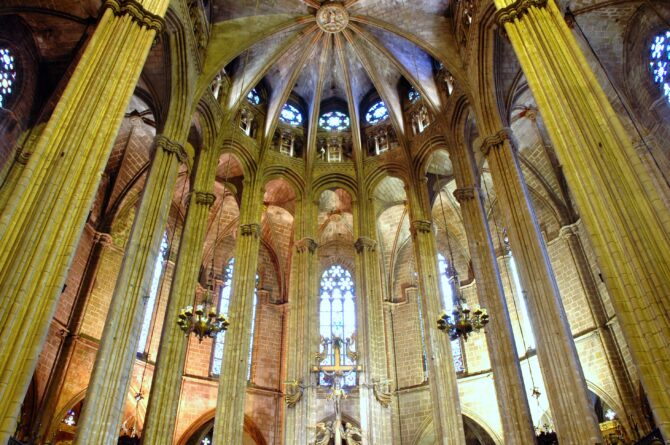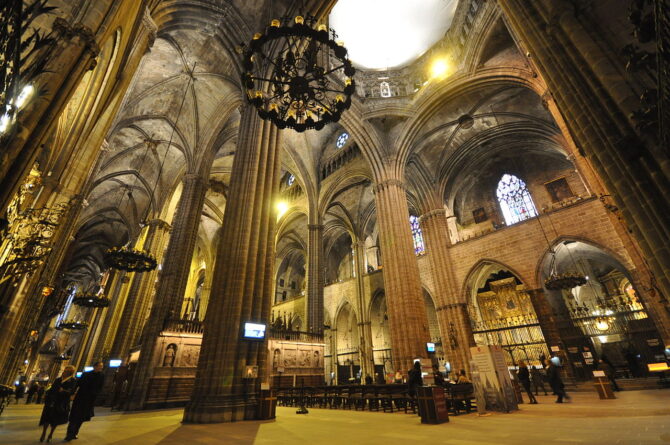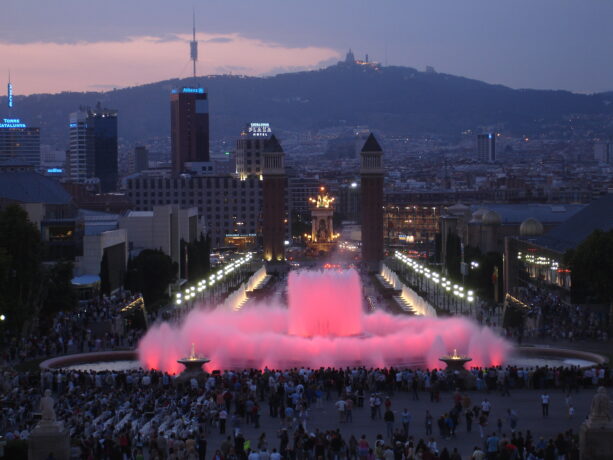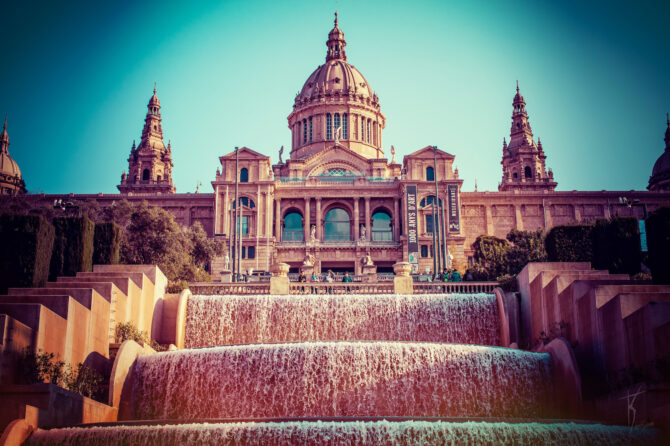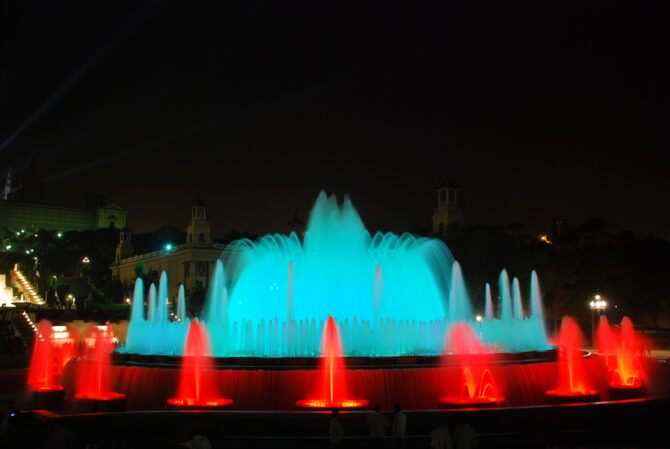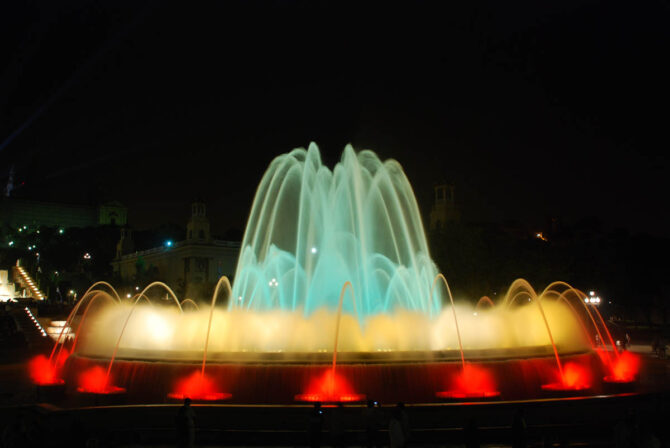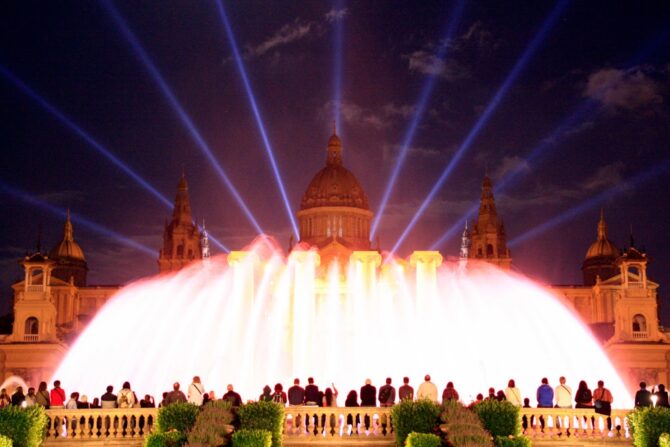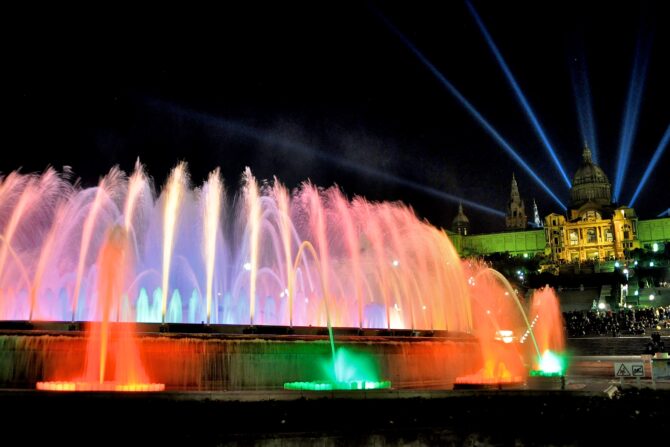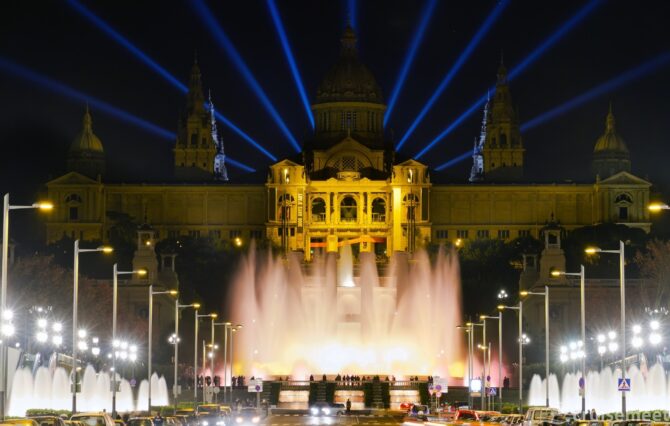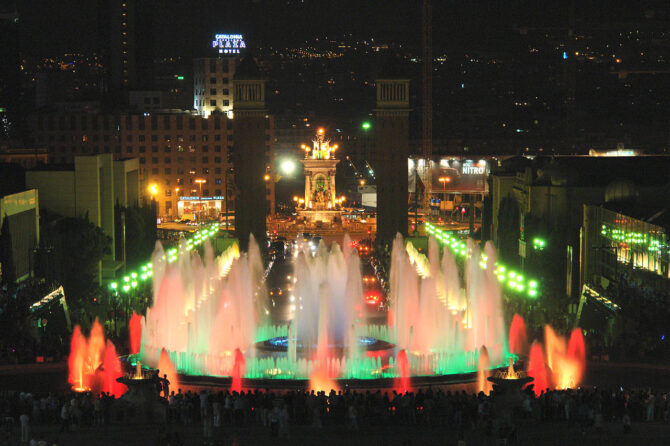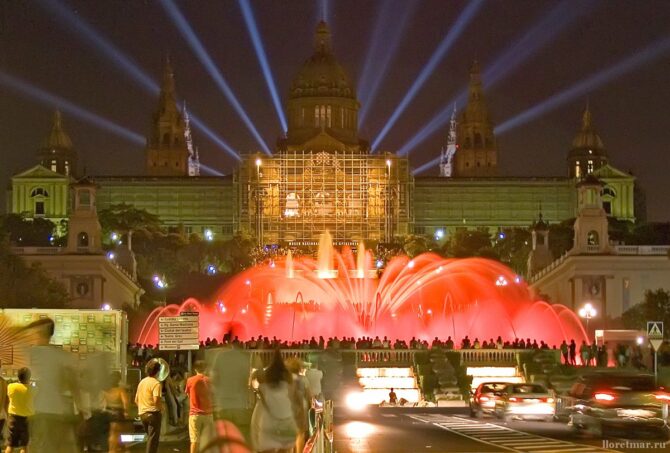The sights of Barcelona are known all over the world. The capital of Spain is famous for its masterpieces of architecture, outstanding religious buildings, squares and fountains, which foreign tourists seek to see. The city is perfectly adapted for both entertainment and cultural events.
Nature has endowed the Spaniards with friendly snow-white smiles and warm hospitality. Many foreigners are surprised that here they can easily be approached by passers-by, say hello and ask how you are doing? In turn, tourists can always count on the fact that the first person stopped on the street or square will try to answer the question in detail or tell you how to get to the right place.
From a trip to this beautiful city, numerous tourists bring unforgettable impressions and souvenirs such as:
- castanets;
- Andalusian ceramics;
- wine;
- cheeses;
- bull figurines.
Barcelona is a city of entertainment and unbridled zest for life. Both young people and older people like to go to the bar and spend the evening in a noisy entertainment venue. The weekend here begins on Thursday, so the second half of the “working” week in Barcelona is held to music and songs.
Sagrada Familia
The Sagrada Familia is the most recognizable landmark of Barcelona. This temple has been under construction for more than 130 years, and its construction began at the end of the 19th c. Monumental construction with unusual and even cosmic architecture is completely erected at the expense of visitors who must purchase a ticket at the box office to enter the temple.
According to the idea of the great Gaudí, the cathedral should be crowned with 18 towers, each of which is dedicated to a certain biblical hero. Above the facade and entrance already rises 12 “cobs” – these are the 12 apostles. And very soon over the center of the temple will grow and the main tower dedicated to Jesus Christ. It will be the highest.
All 3 facades of the building are decorated with sculptures and compositions telling about biblical subjects. Despite the fact that the construction is not completed, services are held daily in the temple. Regular services began in 2010, and today up to 2 million people come to visit the unusual cathedral and feel its unique atmosphere every day. The Sagrada Familia is located at Carrer de Malorca, 401.
“To see the splendor of the interior of the Sagrada Familia, it is worth standing in line for several hours. The box office offers the accompaniment of the tour with an audio guide, in my opinion, is worth it, although a few euros more expensive. “
La Ramblas
The Rambla is the famous pedestrian street of Barcelona, which every tourist should walk along. Its length is a little more than a kilometer, and this city artery appeared during the demolition of the medieval fortress walls. The Rambla is divided into 5 sections, each of which has its own name.
The pedestrian boulevard begins from a beautiful cast-iron fountain with drinking water. Here you can see tourists pouring water into plastic cups – it is believed that if you drink it, you will definitely return to Barcelona again.
The next two sections – the Rambla del Estudio and the Rambla of Flowers are the pride of the capital of Spain. Here are the old University and the church of Bethlehem, the street is everywhere decorated with flower beds with flowering plants and neat strips of sheared shrubs.
On the squares of the pedestrian boulevard, tourists constantly walk, local artists show performances, musicians play and sing. Here you can buy a picture with the sights of the city or picturesque landscapes, as well as order your own portrait, which artists offer to draw right on the spot.
“Beautiful street, always lively and interesting. Even if you come here every day, there is still something that you have not seen before. In the evening hours, the street is flooded with the light of yellow lanterns, which makes it “golden”.
Park Güell
At the beginning of the last century, a well-known urban industrialist by the name of Güell decided to build a residential quarter in the city following the example of ecological housing in England. Having bought the land from the city government, he divided it into plots and attracted the architect Gaudí to the development and planning.
But the large-scale idea of the city entrepreneur failed – the townspeople did not want to buy out the plots because of the inconvenient hilly terrain. Güell had no choice but to sell the land to the city for a penny. By this time, 3 houses have already been built on the territory of the future park, which tourists see today while walking along the alleys.
Park Güell is a favorite vacation spot for citizens and guests of Barcelona. Here you can sit on the famous winding bench, visit the fake castle and its hall with 100 columns, take a picture against the background of a mosaic salamander. The entire architecture of the park reminds of Gaudí’s love for winding, smooth lines – uneven paths, rounded railings and stairs, undulating galleries.
“No more than 400 people per hour are allowed into the park. In my opinion, this is a mockery. We stood in line for a very long time and this despite the fact that the high season was already coming to an end. Against the background of fatigue, I no longer wanted to climb to the observation decks, walk a lot and again – there are a lot of people everywhere. “
Mila House
Casa Mila is one of the most famous creations of the famous Antoni Gaudi. He designed and built it for the Mila family, but the building caused a mixed assessment of the townspeople. Many said that it is monstrous and disfigurs the architecture of Barcelona.
Mila’s house is really different from the cozy facades standing next to it on the same street. Among barcelona, it was associated with quarries, and the people called this building — “pedrera”. But Gaudí not only created the original building, but also invested all his architectural skills in laying ventilation communications – even today the house does not require additional air conditioning.
A novelty in the construction of residential buildings were portable partitions in apartments – everyone could move them to change the layout. Today, the House of Mila occupies a local bank, on the floors of the architectural building there are exhibitions, and in the apartment-museum of Gaudí you can get acquainted with the work of the architect. Casa Mila is located at 92 Passeig de Gràcia Boulevard.
“Visiting the Mila House is paid, but it’s worth it. A special impression was made by the apartments, in which you can imagine how the noble Spanish bourgeoisie lived. I really liked the rooftop area. Such a beautiful view from it opens to parks, boulevards, stairs. “
Casa Batlló
Casa Batlló is the famous creation of Antoni Gaudí and the pride of absolutely every Barcelonan. During its construction, when a local entrepreneur decided to build an apartment house, no one imagined how this idea would end as a result. Having received ownership of the house, the entrepreneur was disappointed with its external simplicity and lack of sophistication and wanted to demolish the building. But Gaudí undertook the reconstruction and today the famous house in the “quarter of disagreement” attracts thousands of tourists.
The renovated façade is made in the style characteristic of the Catalan architect with smooth, stretching lines. The building is completely asymmetrical, it is decorated with magnificent mosaics and unusually shaped balconies made of marble. In the decoration of the interior and exterior rooms, natural stone mined on the hill of Montjuïc was used.
To see the house of Batlló dream of many who come to the capital of Spain. The attraction is located at: Passeig de Gracia, 43.
“Many times I saw The house of Batlló in pictures and photos on the Internet, but did not expect how much he would please me. Very beautiful mansion with absolutely fantastic architecture. A fairy-tale house, all covered with “scales” of mosaics. And what smooth shapes! I’m thrilled!”
Plaza Catalunya
The spacious Plaza Catalunya is a kind of meeting place for Barcelonans and guests of the capital of Spain. It is located at the intersection of the pedestrian Ramblas and Passeig de Gràcia. Back in the middle of the 19th c., the inhabitants of the city could not imagine that such a landmark would appear in Barcelona – the square was located in the northern part of the Old Town in the countryside.
Today, all tourists arriving in the capital of Catalonia, consider it mandatory to visit the famous square. Being on it has nothing to do with politics or the city government. It is a place of walks and quiet pastime on weekends and warm summer days. The square is decorated with several fountains, the main of which is located in its center. The territory of the area occupies more than 50 thousand square meters. meters.
Plaça Catalunya acquired a certain charm on the eve of the International Exhibition of 1929. New fountains appeared here, the square was paved with stone, and a monument to the former president of the government of Catalonia Francesco Macia was erected on it.
“It is unlikely that, having arrived in Barcelona, someone has not been to this main square of the city, because many tourists believe that if you drink water from its fountains, you will definitely return to this wonderful city again. There is nothing special on the square – people walk, smile at each other, but the impressions remain the most pleasant. “
National Museum of Art of Catalonia
Unique exhibits telling about the culture and history of the country are located in the building of the National Palace, which since the early 90s of the last century houses the National Museum of Art of Catalonia. In fact, the expositions of the museum were ready for display to the public in 1934, but the war with the fascist invaders prevented the development of funds and the organization of exhibitions.
The National Palace is a unique place. The most beautiful building, located at the foot of Montjuïc Mountain, has many exhibits that can confirm the events of different centuries that took place on Catalan soil. There is a hall of numismatics, which presents ancient coins and currency of different periods. Since the foundation of the museum, the creation and expansion of the Romanesque collection of paintings began, which today attracts a huge number of art lovers.
Only in this museum of Spain you can find the oldest exhibition of wall frescoes. Unique specimens were found in dilapidated churches in the Pyrenees and brought to the museum.
“The museum building itself is very beautiful, you can climb to it both along the stairs – they are very steep and uncomfortable, and on the escalator. The expositions are very diverse. There were not very many tourists at the time of our arrival. When buying tickets, an audio guide service is offered. Interesting for those who understand art.”
Palace of Catalan Music
The Palace of Catalan Music is a concert hall with world fame. It is located near the Gothic Quarter and is the venue for the largest musical events of the country and the world.
Built in the early 20th century, palau de la Musica Catalana delights with its unique architecture, on which the famous architect Lewis Domenech worked. He managed to combine into a single ensemble many decorative elements, sculptural groups and original, intricate forms. The façade of the building is decorated with windows framed by columns and stained glass panels.
The interior inside the building is also gorgeous. The center of the hall is crowned with a dome of stained glass, inverted and hanging down. The floor and walls are richly decorated with marble, and the ceilings are decorated with huge chandeliers. In this palace of the city the largest events are held – opera and symphonic concerts, jazz performers perform, national songs sound. You can see the palace by coming to a concert or buying a ticket for an excursion.
“Here it is the idea of the Spaniards about beauty! Even from the outside, the palace seems fabulous, and when you get into its walls , the speech disappears from admiration. We were at a flamenco concert. Bright, colorful show. But then we decided that it would be necessary to visit this fairy tale again, only as part of an excursion. Yeah, you can’t take pictures here.”
Barcelona Cathedral
Barcelona’s main temple is located in the Gothic Quarter. In its place in the IV century was a church, which was important for the Roman colony. After 400 years, it was completely destroyed by the Moors. The construction of the modern Cathedral of Barcelona began at the beginning of the thousandth century and lasted more than 150 years.
The external architecture of the cathedral amazes with its majesty and power, which is inherent in Gothic buildings, but in the interior decoration you can feel the gentle attitude of architects to their “brainchild” and medieval simplicity. Inside the temple you can see the image of the Coronation of St. Eulalion, written by the hand of a German artist, as well as sculptures of 13 geese – legendary birds that glorified the martyr who died at the hands of pagans. The interior beautifully fits 25 prayer rooms and magnificent marble baptismal baths.
Barcelona Cathedral is located at Piaca Santa Maria 1.
“The atmosphere in the cathedral is unique, you can feel peace and tranquility. You can watch the service from the side – it is broadcast on the screens of large TVs placed on different sides inside the temple, put candles, listen to organ music and just enjoy the splendor of Gothic architecture. “
Magic Fountain of Montjuïk
The magic fountain of Montjuïk is one of the main decorations of the city and a place where a huge number of tourists and locals gather. It was built at the beginning of the last century, when Barcelona was preparing to host the Fair and Universal show, and since then it has been one of the attractions of the capital of Spain.
Spectators who see the Magic Fountain are fascinated by the light of lights. Jets of water, as if dancing, merging in a violent plexus and overflows. In the 90s. with the water-light show added music and today the jets of the fountain dance to the sounds of jazz, national melodies and opera music.
The famous action takes place in the evenings, and its duration does not exceed 20 minutes. When the evening darkness descends on the city, the fountain acquires a unique, mysterious and magical appearance, shimmering with all the colors of the rainbow and filling the area around it with sounds of melodies recognizable even by foreigners. A huge fountain, the area of which is about 3 thousand square meters. meters, is located in Montjuïc near the National Palace.
“During the peak season, it is very difficult to find a convenient place so that the panorama is not obscured by numerous tourists. Many come here in advance and wait for the show to start. The first time I saw this fountain, I was struck by the beauty and scale of the structure. Subsequently, it was not so interesting, but at least once it is worth watching. “
Barcelona is good at any time of the year. In the summer months until September, the beach season lasts here, so there are a lot of tourists, and accommodation in hotels and hotels, like tickets for some excursions, are more expensive. Throughout the year, all the sights of the city are available to foreigners, and the weather is almost always favorable for long walks and excursions. Many tourists prefer to celebrate the New Year in Barcelona. At this time, the capital of Spain is especially beautiful and solemn.

